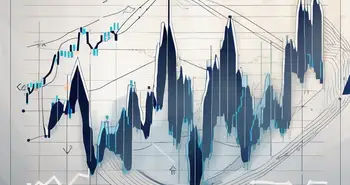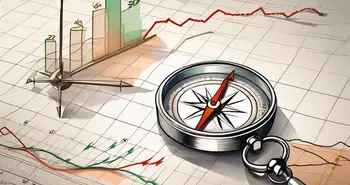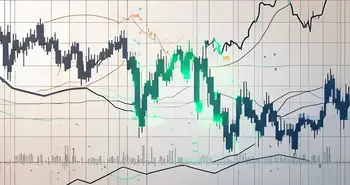Trade Like an FX Dealer: Tips and Strategies

Trading foreign exchange (FX) can be an exciting and potentially lucrative venture. As an FX dealer, I have gained valuable insights into the world of trading. In this article, I will share some tips and strategies that can help you trade like a pro and achieve success in the FX market. So, let's dive in and explore the fascinating world of FX trading!
Understanding the Basics of FX Trading
Before you start trading, it's important to have a solid understanding of the basics. As an FX dealer, my role involves buying and selling currencies on behalf of clients. I provide liquidity to the market and ensure that transactions are executed smoothly.
To begin with, familiarize yourself with key terms and concepts in FX trading. Terms like “pip,” “lot,” and “spread” are essential to grasp. A pip, short for “percentage in point,” represents the smallest unit of measurement in currency trading. It is used to measure the change in value between two currencies. A lot refers to the standardized quantity of a currency that is traded in a single transaction. It helps determine the size of your position and the potential risk involved. The spread, on the other hand, refers to the difference between the buying and selling price of a currency pair. It represents the cost of executing a trade.
Additionally, understanding the factors that influence currency exchange rates is crucial. Economic indicators play a significant role in determining the strength or weakness of a currency. Factors such as interest rates, inflation, and employment data can impact the value of a currency. For example, if a country's interest rates are high, it may attract foreign investors, leading to an increase in demand for its currency. On the other hand, geopolitical events, such as political instability or trade disputes, can also have a profound effect on currency exchange rates. Keeping track of these events and their potential impact on the market is essential for successful FX trading.
Furthermore, it's important to understand the different types of FX trading strategies. Some traders prefer to use technical analysis, which involves analyzing historical price data and using various indicators to predict future price movements. Others rely on fundamental analysis, which focuses on economic and political factors to determine the value of a currency. There are also traders who combine both approaches to make informed trading decisions.
Lastly, developing a trading plan and managing risk are crucial elements of successful FX trading. A trading plan outlines your goals, trading strategy, and risk management techniques. It helps you stay disciplined and avoid impulsive decisions. Risk management involves setting stop-loss orders to limit potential losses and using proper position sizing techniques to ensure that you don't risk too much of your capital on a single trade.
Developing Your Trading Strategy
Every successful trader has a well-defined trading strategy. To develop yours, start by identifying your trading style. Are you more inclined towards day trading or swing trading? Each style requires a different approach and mindset.
Day trading involves executing trades within a single day, aiming to profit from short-term price movements. It requires quick decision-making skills and the ability to handle high levels of stress. On the other hand, swing trading involves holding positions for several days or weeks, capitalizing on medium-term price fluctuations. It requires patience and the ability to analyze trends over a longer time frame.
Once you have determined your trading style, it is essential to set clear trading goals that align with your risk tolerance and financial objectives. Whether you aim for regular income or long-term capital appreciation, your goals will shape your trading decisions.
For example, if your goal is to generate regular income, you may focus on day trading strategies that aim for smaller, frequent profits. On the other hand, if your goal is long-term capital appreciation, you may opt for swing trading strategies that aim for larger, less frequent profits.
One strategy I found effective is to focus on a few currency pairs rather than spreading your attention too thin. By specializing in a handful of pairs, you can better understand their behavior and increase your chances of success.
When selecting currency pairs to trade, consider factors such as liquidity, volatility, and correlation. Liquidity refers to the ease of buying and selling a particular currency pair without causing significant price fluctuations. Volatility refers to the magnitude of price movements, which can provide opportunities for profit but also increase the risk. Correlation refers to the relationship between currency pairs, as some pairs tend to move in the same direction while others move in opposite directions.
By focusing on a few currency pairs, you can closely monitor their price movements, economic news, and market sentiment. This in-depth knowledge will allow you to make more informed trading decisions and potentially increase your profitability.
Furthermore, developing a trading strategy involves continuous learning and adaptation. Stay updated with the latest market trends, economic indicators, and geopolitical events that can impact currency prices. Regularly review and analyze your trading performance to identify strengths and weaknesses. Adjust your strategy accordingly to optimize your results.
In conclusion, developing a trading strategy requires careful consideration of your trading style, goals, and currency pair selection. By specializing in a few pairs and staying informed, you can increase your chances of success in the dynamic world of trading.
Risk Management in FX Trading
As an FX dealer, I cannot stress enough the importance of risk management. Regardless of your trading strategy, managing risk should always be a priority. One way to do this is by setting appropriate stop-loss orders that limit potential losses.
Another effective technique is to diversify your portfolio. By spreading your trades across different currency pairs or even other asset classes, you can reduce the impact of any single loss and increase your chances of overall profitability.
Essential Trading Tools and Platforms
Choosing the right trading platform is crucial for your success as an FX trader. Look for platforms that offer robust features, user-friendly interfaces, and reliable execution. Several reputable platforms are available in the market, so take your time to find the one that suits your needs.
Utilize trading tools that provide market analysis and help you make informed decisions. Tools such as technical indicators and economic calendars can provide valuable insights into market trends and potential entry or exit points.
Advanced Trading Techniques
While mastering technical analysis is a key aspect of successful trading, it's equally important to incorporate fundamental analysis into your strategy. Fundamental analysis involves studying economic data and news events that can impact currency movements.
By seamlessly blending both technical and fundamental analysis, you can gain a holistic view of the market and refine your trading decisions. As an FX dealer, I have found this approach to be highly effective in my own trading journey.
Now that we have covered the essential tips and strategies for successful FX trading, let's address some frequently asked questions:
Frequently Asked Questions
Q: What are the key terms I need to know in FX trading?
A: To trade successfully, familiarize yourself with terms like “pip” (the smallest measure of a currency pair's value), “lot” (the standardized trading quantity), and “spread” (the difference between the buying and selling price).
Q: How should I develop my trading strategy?
A: Start by identifying your trading style and setting clear goals. Consider specializing in a few currency pairs and focus on risk management by setting stop-loss orders and diversifying your portfolio.
Q: What trading tools and platforms should I use?
A: Look for a reliable trading platform that suits your needs and provides a user-friendly interface. Utilize trading tools that offer market analysis, such as technical indicators and economic calendars, to make informed decisions.
Q: Are there any advanced trading techniques I should learn?
A: Yes, mastering both technical and fundamental analysis is essential. Incorporating fundamental analysis by studying economic data and news events can provide valuable insights into currency movements.
In conclusion, by understanding the basics, developing a sound trading strategy, managing risk effectively, utilizing the right tools and platforms, and incorporating advanced techniques, you can trade like an FX dealer and increase your chances of success in the exciting world of FX trading. Remember, continuous learning and practice are key to honing your trading skills. So, step into the world of FX trading with confidence and watch your trading journey unfold!
Ready to elevate your FX trading with the innovative features of Morpher? Embrace the future of investing on a platform that eliminates trading fees, offers infinite liquidity, and provides the flexibility of fractional investing and short selling. With Morpher, you can trade with confidence, knowing you have full control over your funds with the non-custodial Morpher Wallet. Plus, with up to 10x leverage and the ability to trade Virtual Futures, your trading strategies can reach new heights. Don't miss out on the unique trading experience Morpher.com offers. Sign Up and Get Your Free Sign Up Bonus today, and join the community of traders who are already transforming the way they invest.

Disclaimer: All investments involve risk, and the past performance of a security, industry, sector, market, financial product, trading strategy, or individual’s trading does not guarantee future results or returns. Investors are fully responsible for any investment decisions they make. Such decisions should be based solely on an evaluation of their financial circumstances, investment objectives, risk tolerance, and liquidity needs. This post does not constitute investment advice.

Painless trading for everyone
Hundreds of markets all in one place - Apple, Bitcoin, Gold, Watches, NFTs, Sneakers and so much more.

Painless trading for everyone
Hundreds of markets all in one place - Apple, Bitcoin, Gold, Watches, NFTs, Sneakers and so much more.









